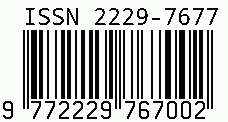
International Journal on Science and Technology
E-ISSN: 2229-7677
•
Impact Factor: 9.88
A Widely Indexed Open Access Peer Reviewed Multidisciplinary Bi-monthly Scholarly International Journal
Plagiarism is checked by the leading plagiarism checker
Call for Paper
Volume 16 Issue 3
July-September 2025
Indexing Partners



















BIRDS SPECIES SPECTRUM OF WESTERN YAMUNA CANAL (WYC) REGION OF HARYANA
| Author(s) | Dr. Gian Bhushan |
|---|---|
| Country | India |
| Abstract | Indian biodiversity includes large number of species of invertebrates, 2546 species of fishes, 204 species of amphibians, 446 species of reptiles, 1228 species of birds and over 500 different species of mammals. Avifaunal study was carried out in along the Western Yamuna Canal Region from Yamuna Nagar to Karnal during January 2022 to December 2022. Different Species of birds were recorded on vegetation along roadside, electrical wires and the periphery of the canal during the study period. The present studies reveal that 49 species of birds which are commonly witnessed in rural areas belonging to 29 different families. Anatidae was the most dominant family containing 9 birds species followed by Columbidae, Corvidae and Charadriidae families having 3 birds species each and family Alcedinidae, Motacillidae, Phasianidae, Cuculidae, Sturnidae and Rallidae families containing 2 birds species each and remaining families one bird species each of the total number of bird species observed. The most commonly found birds are: House Sparrow, Cattle Egret, Jungle Babbler, Asian Koel, Common Myna, Blue Rock Pigeon, Yellow-footed Green Pigeon, Spotted Dove, Black Drongo, Indian Treepie, Red Vented Bulbul and White Wagtail. The various aspects of Birds of Western Yamuna Canal Region (WYC) from Yamuna Nagar to Karnal would be discussed. |
| Keywords | Birds Species Spectrum, Haryana, Wetland Birds, Western Yamuna Canal Region |
| Field | Biology > Zoology |
| Published In | Volume 16, Issue 2, April-June 2025 |
| Published On | 2025-06-05 |
| DOI | https://doi.org/10.71097/IJSAT.v16.i2.5979 |
| Short DOI | https://doi.org/g9pz65 |
Share this


CrossRef DOI is assigned to each research paper published in our journal.
IJSAT DOI prefix is
10.71097/IJSAT
Downloads
All research papers published on this website are licensed under Creative Commons Attribution-ShareAlike 4.0 International License, and all rights belong to their respective authors/researchers.

